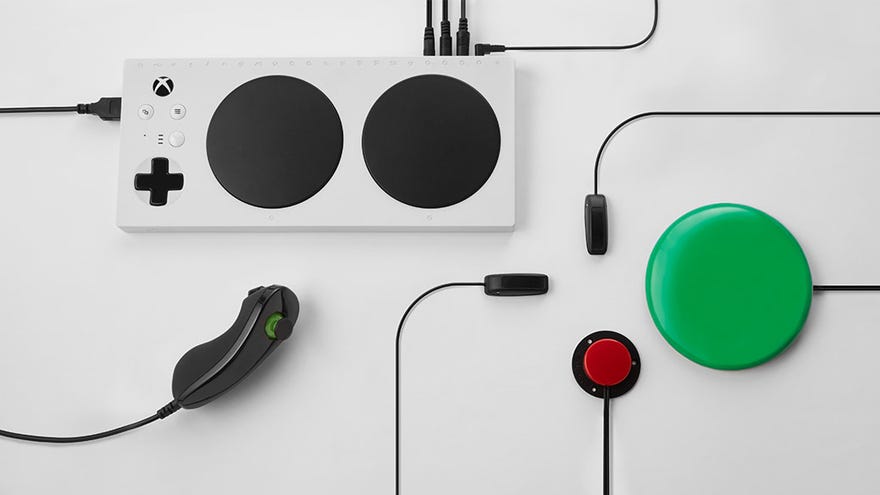Microsoft share their accessibility guidelines for the benefit of all developers
Access granted
Xbox have been doing rather well with accessibility lately. But as well-considered as things like the Adaptive Controller (and Logitech's recently-launched suite of plug-in pads for the thing) are, getting into the game is only half the fight. This week, they released a set of accessibility guidelines which Microsoft say they formed "in partnership with industry experts and members of the gaming and disability community.
Dense with advice on everything from text display and UI navigation to input, the new resource aims to finish that fight getting game creators to consider all players, regardless of physical or cognitive capability, at all stages of development.
Xbox accessibility program manager Brannon Zahand announced the new resource hub last night, aimed at getting a wealth of accessibility guidelines out there for "game designers, developers, producers, and testers" to peruse.
Let's take an example. Subtitles have been kinda trash lately. Tiny, useless buggers, too small to read, needlessly stylised and often lost against the background. The sort of thing The Outer Worlds needed to buff up in a recent patch.
These guidelines on subtitles include sensible suggestions like ensuring subtitles are "provided for all spoken content", making sure they're enabled by default, or otherwise able to be turned on before gameplay starts. The page also includes a laundry list of best practices for font, size and colour.
Microsoft's guidelines also cover game difficulty, and have no time for your whinging over easy modes. As they explain, "the ability to set a game to a very low level of difficulty may be the difference between a younger / casual gamer or gamer with disability being able to play, enjoy, and complete a title."
Difficulty is a complex thing. You can't really go wrong with letting players tailor their experience to fit their skills or needs.
"Difficulty is often thought of as “Easy / Normal / Hard” but these are broad buckets affecting entire swathes of variables. It’s important to recognize that different aspects of games provide different types of challenges and that gamers may want or need to configure these individually. To that end, games should choose to have multiple difficulty settings when possible.
"Example: There might be discrete difficulty settings for in-game puzzles as well as combat in the same title allowing someone with fine motor control to turn down the difficulty when fighting enemies while keeping the puzzle difficulty high. Similarly, a user with limited cognitive skills might choose to turn down the puzzle difficulty setting while keeping the combat difficulty high."
Each of these accessibility pages also tells you what sort of player will benefit the most from these standards, while providing tip-top examples to follow. The difficulty sections, for example, highlights Shadow Of The Tomb Raider for allowing various options for puzzle, exploration and combat challenge.
At the end of the day they're guidelines, not requirements. Developers won't be forced to follow these practices. They bloody well should, though. Microsoft have put the results of their extensive (and likely expensive) research into the wild, so developers don't need to figure it all out by themselves.









